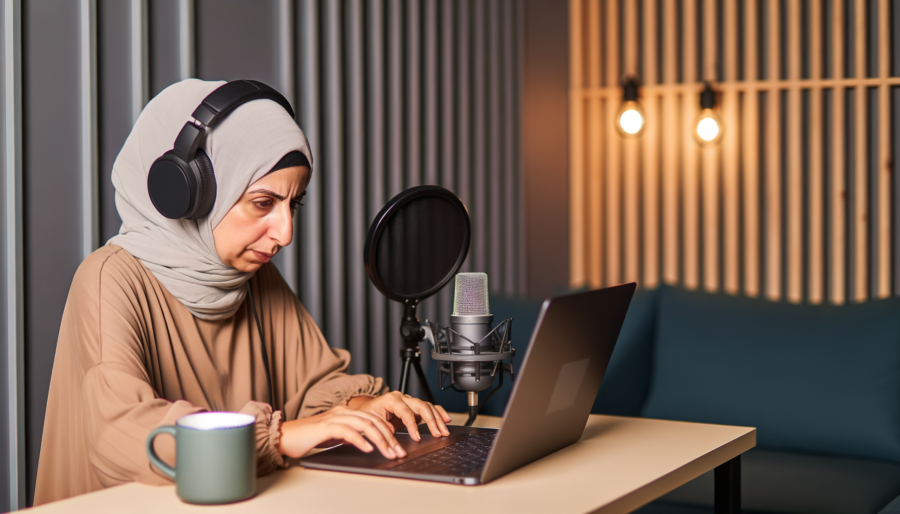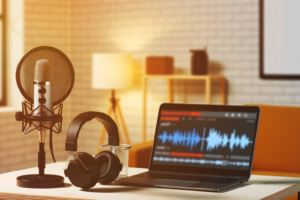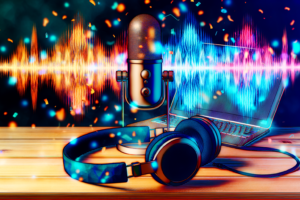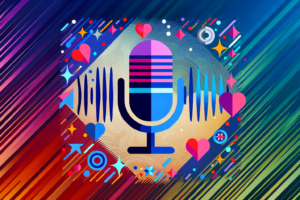The Best Podcast Editing Techniques for Beginners
Podcasting has taken the digital world by storm, offering everyone a platform to share their stories, insights, and creativity. As more voices enter the podcasting world, delivering high-quality content becomes essential to capture and retain an audience. That’s where podcast editing comes in. Today, we’re diving into the essential editing techniques every beginner should master to ensure their content shines.
Understanding the Basics of Podcast Post-Production
Podcast post-production isn’t just about piecing together audio—it’s about enhancing clarity, maintaining a smooth flow, and engaging your listeners. Think of it as the magic behind the scenes that transforms your raw recordings into polished episodes that captivate and convey your message effectively.
Choosing the Right Editing Software for Podcasters
If you’re just starting out, you’ll want editing software that’s both powerful and easy to use. Popular options like Audacity and GarageBand are favored by many beginners for their intuitive interfaces and robust features. When selecting software, consider factors like ease of use, available features, and affordability. A bit of research will quickly reveal which tool suits your podcasting style.
Removing Background Noise
A clean audio environment is critical for podcasting success. Background noise can distract your listeners, making it tough for them to focus on your content. Fortunately, most editing software offers features to reduce unwanted noise. Start by identifying the noise, then use your software’s noise reduction tools to clean up the recording. Always aim to minimize noise during recording with techniques like using quiet spaces and pop filters.
Cutting Podcast Mistakes
We all make mistakes, but podcasts thrive on a natural, uninterrupted flow. When editing, carefully cut out mistakes without making the edits noticeable. Transition smoothly between edits to maintain continuity. A well-edited podcast isn’t only about removing mistakes, but ensuring the conversation feels seamless and engaging.
Audio Compression for Podcasts
Audio compression is your friend when it comes to achieving consistent volume levels. It balances out the peaks and valleys in your audio, so listeners don’t have to adjust their volume constantly. Apply simple compression techniques using your editing software, and don’t be afraid to experiment with settings until you achieve a balanced sound.
Podcast EQ Settings
Equalization (EQ) is the art of shaping sound. Proper EQ settings can enhance voice clarity and presence, making your podcast sound professional. Start with basic adjustments to bring warmth and crispness to your voice. Experiment with different frequencies to suit various vocal characteristics and add depth to your recordings.
Normalizing Podcast Audio
Normalizing audio involves adjusting levels to a standard loudness, ensuring a uniform volume across your podcast. This technique is crucial for maintaining listener comfort throughout your episode. A simple guide through your software’s normalization process can make a huge difference in how your podcast is perceived.
Reducing Plosives in Podcasts
Plosives, those pesky pops from letters like “p” and “b”, can be a bane to your sound quality. Reduce them by using pop filters during recording and adjusting your mic technique. In post-production, you can further minimize them using your editing software’s features, ensuring a smooth listening experience.
Conclusion
Mastering podcast editing techniques is your key to producing content that resonates with listeners. Practice makes perfect, so keep honing these skills to polish your episodes. Share your editing journey or ask questions in the comments below—we’d love to hear from you!






